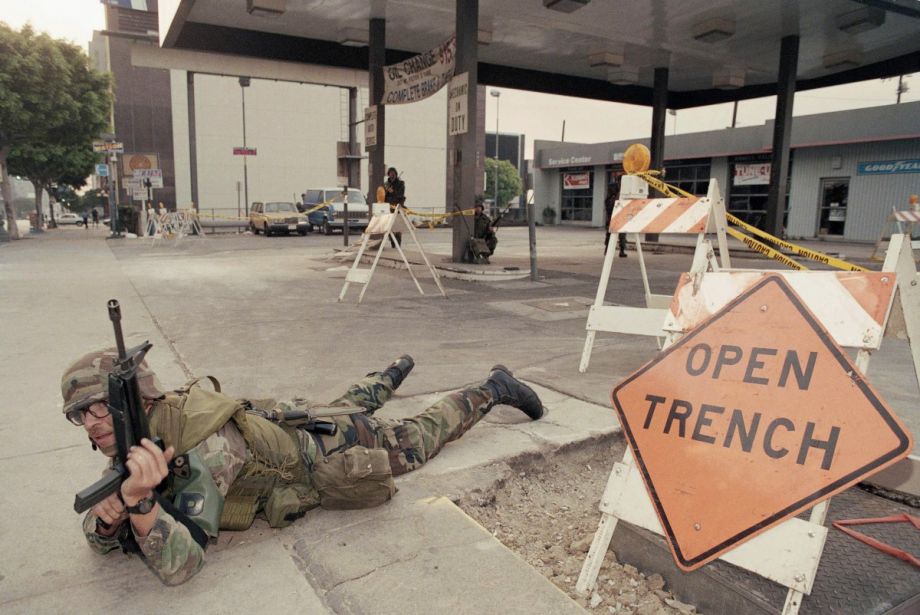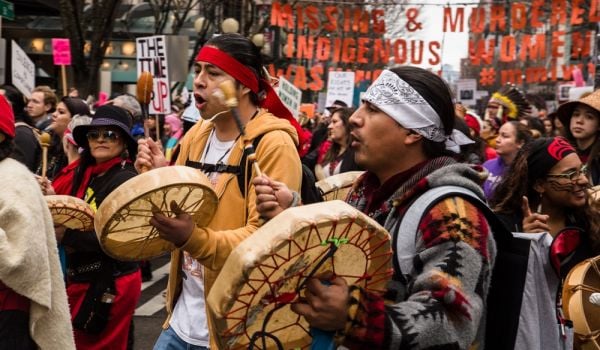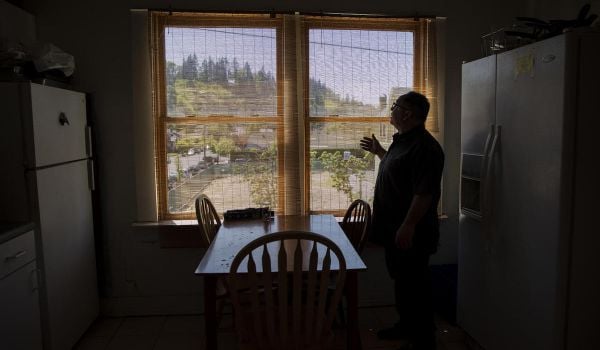Throughout his campaign for the presidency Donald Trump described himself as the “law-and-order” candidate, and upon taking office he wasted little time demonstrating his willingness to live up to that title.
Within days of his inauguration, President Trump took to Twitter to weigh in on the rising murder rate in Chicago — vowing to “send in the feds” if the city doesn’t fix the “horrible carnage going on.”
If Chicago doesn’t fix the horrible “carnage” going on, 228 shootings in 2017 with 42 killings (up 24% from 2016), I will send in the Feds!
— Donald J. Trump (@realDonaldTrump) January 25, 2017
While Trump’s comments seem to have been influenced by a Fox news commentary and ongoing partisan sniping, local and national leaders of all political persuasions have long been concerned with violence in the city. The U.S. Department of Justice recently concluded a 13-month investigation into police tactics that uncovered systemic problems contributing to high crime rates and reduced public safety. Other agencies, including the FBI and the Bureau of Alcohol, Firearms, Tobacco and Explosives, operate locally and regularly collaborate with city crime-fighters.
Indeed, Trump is not the first president to take on the issue of urban violence but his approach may well look very different than anything cities have seen since the 1990s. In framing cities as war zones, he has re-entered a realm of policy that saw its heyday decades ago. Yet while liberals may distance themselves from aggressive policing tactics that Trump has suggested, a succession of democratic administrations is largely responsible for creating the playbook that he would most likely follow.
Their efforts were based on a progressive vision for the role of government that reached a crescendo under President Lyndon Johnson and helped unleash a costly, decades-long war on crime that many now blame for sowing, rather than mitigating, community instability.
“[President] Johnson’s most enduring legacy with respect to domestic policy lies not with his ‘Great Society,’” writes historian Elizabeth Hinton, “but in the punitive turn spearheaded by his administration.”
Thanks to Johnson’s effort there is now a well-established legal and logistical framework for direct federal intervention in local jurisdictions.
In the summer of 1967, Johnson ordered elements of the 82nd and 101st Airborne Divisions to Detroit, where violent riots had broken out in response to racial unrest and civil rights grievances. By the end of his term Johnson would send troops to several other cities. This includes Chicago — which was patrolled by more than 5,000 U.S. Army troops after rioting broke out there following the assassination of Martin Luther King.
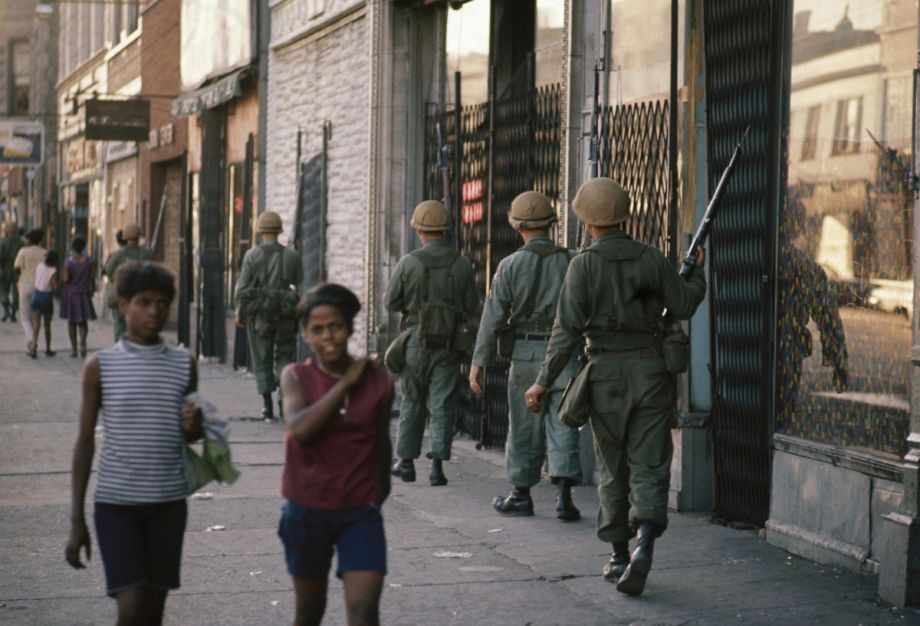
National Guard patrol the streets in Chicago, following rioting and violence that ensued after the news of the assassination of Dr. Martin Luther King, Jr. in 1968. (AP Photo)
These soldiers arrived in urban, predominantly black neighborhoods under the power of the Insurrection Act of 1807 — which gives the executive branch authority to deploy military troops domestically, whenever “unlawful obstructions, combinations, or assemblages, or rebellion against the authority of the United States, make it impracticable to enforce the laws of the United States in any state by the ordinary course of judicial proceedings.”
Although they have the authority to do so, presidents rarely use this power. And it’s almost unheard of to put U.S. military boots on the ground without a direct request from a state’s governor for aid. More recently, a shift towards institutional reform has created a bigger role for the DOJ in using its leverage to address social instability in lieu of overt military force.
Trump seems intent on turning the clock back. If he ultimately chooses to send the military into Chicago to fight crime, he would be the first commander in chief to do so in 25 years — when President George H.W. Bush activated 4,000 U.S. Marine and Army troops to quell deadly rioting in Los Angeles sparked by the acquittal of four police officers in the video-taped beating of Rodney King.
Bush’s decision came at the request of California Governor Pete Wilson, and proceeded a night of phone calls between Washington and Sacramento.
Not since 1957, when President Dwight Eisenhower authorized military intervention in Little Rock, Arkansas, to enforce school desegregation has the executive branch invoked the Insurrection Act to circumvent state authority to quell local unrest.
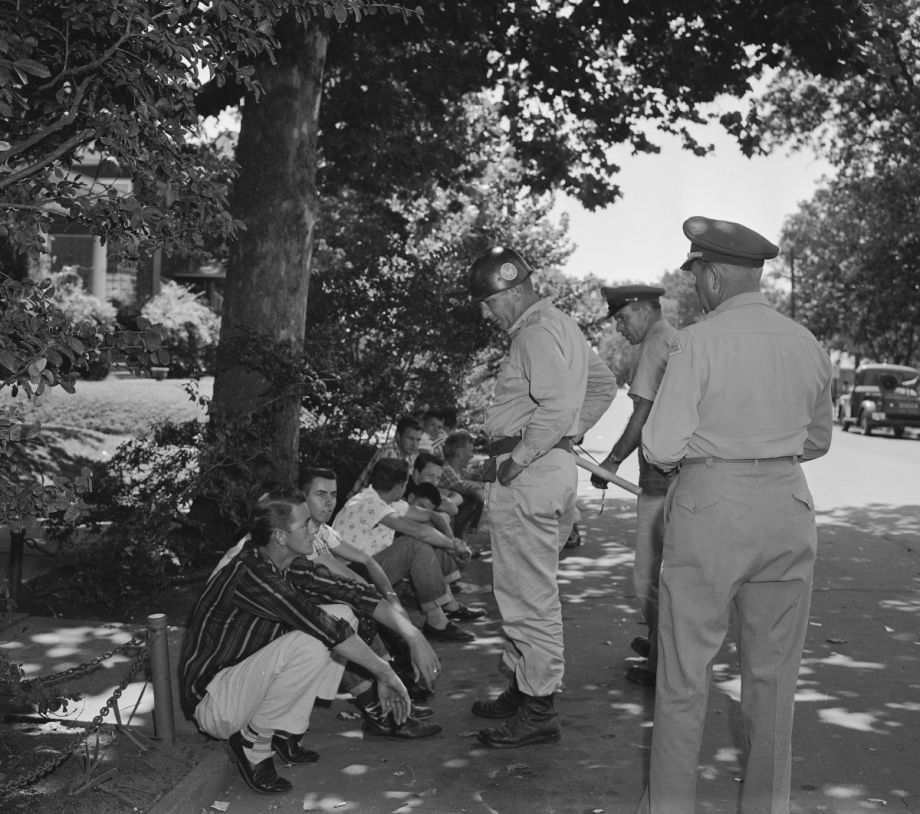
Teenagers who heckled passersby at Central High School in Little Rock, Ark., are held by National Guardsmen and told to either quiet down or be escorted from the scene in 1957. (AP Photo/William P. Straeter, File)
On Wednesday, Chicago Mayor Rahm Emanuel toed the line toward inviting federal crime-fighters to his city when he goaded Trump during a news conference.
“Send more FBI, DEA, ATF agents,” the mayor said. “We don’t have to talk about it anymore. Just send them.”
Given Trump’s demonstrated willingness to flex the boundaries of constitutional law — and his lack of attention the traditions of governance — it’s not clear that he would wait for an official invitation to federalize the Illinois National Guard or even send U.S. troops onto the streets of Chicago.
Nevertheless, direct military intervention isn’t the only way the federal government can exert pressure on local jurisdictions. Congress also has the power or make laws and to distribute (or withhold) money — and it has used both aggressively over the past half-century to expand its role in maintaining order at the local level. Most recently, Trump ordered his administration to cancel federal funding for sanctuary cities that limit local law enforcement cooperation with federal immigration agents.
In the years following the Johnson presidency, Richard Nixon would build upon his predecessor’s efforts and unleash an unprecedented expansion of federal influence over state and local crime control. From 1965 to the 1980, federal spending on crime skyrocketed from $22 million to roughly $7 billion.
Throughout the 1970 and 1980s Nixon’s promise to launch “an all-out global war on the drug menace” became a reality as the recently formed Drug Enforcement Administration (launched in 1973) grew from an agency with 600 staffers in Washington, D.C., into a network of “tactical units” across the nation with more than 2,000 front-line agents.
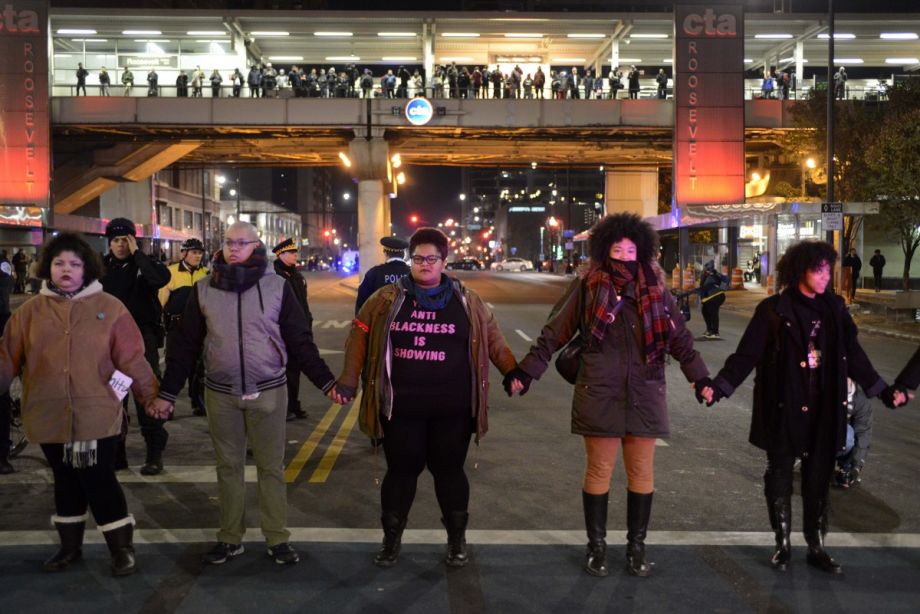
The DOJ investigation into Chicago policing was sparked by the killing of Laquan McDonald, an act of police violence protested by Chicagoans like those pictured here. (AP Photo/Paul Beaty)
The impact it had on America’s urban centers was swift and dramatic. Before long it was clear that the “War on Drugs” was evolving into a war on poor, urban communities.
During the 1980s, lawmakers in Washington expanded that conflict by using their power to enact dozens of new laws and orchestrate a gradual takeover of drug enforcement power from states and cities. Drug law wasn’t the only avenue for growing federal crime-control policies.
According to a report from the Heritage Foundation, Congress has passed an average of more than 50 new crimes a year in the decades since Reagan was in the White House. The majority of these are regulatory in nature. But a number of measures — including the Armed Career Criminal Act and the Anti-Drug Abuse Act of 1986 — created new classes of federal criminals.
Under the Supremacy Clause of the Constitution, the federal government takes precedent over states and cities in enforcing a range of crime that just a few decades ago were out of its jurisdiction. Over the course of two decades (1986-2006), federal prosecutions for gun crimes grew by more than 500 percent.
The federal prison system was forced to grow to keep up with an influx of new inmates who would previously been under the jurisdiction of state authorities. Between 1980 and 2011 the number of inmates in prison on federal drug offenses blossomed from under 5,000 to over 100,000 people, according to Human Rights Watch. Many prisons pull a disproportionate number of inmates from urban zip codes.
President Bill Clinton is credited with some the largest expansion of federal policing power. Under Clinton, a sweeping anti-violent crime initiative directed U.S. attorneys work with communities to fight violent crime. And Clinton’s landmark crime-fighting bill — the Violent Crime and law Enforcement Act of 1994 — established an Office of Community Oriented Policing Services (COPS) to dole out millions of dollars in new federal grants to fuel cooperative efforts between federal and local law enforcement.
Since its creation the COPS office has issued more than $14 billion in funding to thousands of police agencies around the country in an effort to improve the way law enforcement officers interact with the constituents they are sworn to protect. But while the move towards community oriented policing has been praised by civil rights advocates, COPS resources have often been used to bolster the kind of “proactive policing” tactics (including stop-and-frisk) that Trump advocated for on the campaign trail.
In Chicago, local officials, including Mayor Emanuel, say they are not interested in constitutionally dubious measures like stop-and-frisk; and given the CPD’s track record on civil rights their reluctance is understandable. However, both Emanuel and Chicago police leaders say they welcome federal resources to tackle violent crime, and they have called on the Washington to increase enforcement of federal gun laws, which declined during the Obama years.
If and how the new “law-and-order” president intends to address urban violence remains to be seen, but thanks to the efforts of his predecessors — both Democrat and Republican — he has ample tools at his disposal. One can only hope he doesn’t take us backwards in the process.
Christopher Moraff writes on politics, civil liberties and criminal justice policy for a number of media outlets. He is a reporting fellow at John Jay College of Criminal Justice and a frequent contributor to Next City and The Daily Beast.
Follow Christopher .(JavaScript must be enabled to view this email address)

